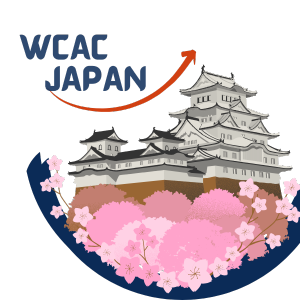
Introduction
The Extracorporeal Membrane Oxygenation (ECMO) is a medical procedure performed outside of the body for providing longer cardiac and respiratory support to the patients whose heart and lungs are unable to provide an ample amount of exchange of gases or perfusion to live. The ECMO technology has been acquired from the cardiopulmonary bypass providing short term arrested native circulation.
History
The initial heart and lung equipment were used for the surgery by Dr.Gibbon in 1965. Changes were made in the equipment to support the lungs and heart for longer period.
The Father of ECMO, Robert Barlett was known for his great work in developing ECMO.
In earlier 1970s ECMO’s research was initialized with adults but rapidly turned to newborns with breathing problems. After the first successful treatment of a newborn in California in 1975 by Dr. Robert Barlett, the ECMO program was brought to the University of Michigan in 1980.
With time, the ECMO procedure was expanded to the pediatric population and then was made available to the adults.
Principle
The principle is mainly based on,
- CO2 removal, the addition of O2 through an extracorporeal device
- Desaturated blood is drained using a venous cannula
- The blood is returned to systematic circulation using VV ECMO and VA ECMO
What is ECMO used for?
This technique is for helping the patients whose
- Heart is unable to pump the required amount of blood to the body
- Lungs are unable to supply an apt quantity of oxygen to the patient body even after external supply
- Lungs are unable to get rid of CO2 even after the external source of removal
This can also be used in supporting the patients with heart or lung diseases, waiting for organ transplantation.
Configurations:
ECMO can be inserted in 2 configurations
- Veno-venous
- Veno-arterial
The mode of ECMO is explained by the position of access and return cannule.
There are 3 modes of ECMO
- Veno-venous (VV)
- Veno-arterial (VA)
- Veno-pulmonary artery (VPA)
VV and VA are the modes of ECMO having many configurations suiting the best to patient’s requirements.
Veno-arterial ECMO
Venous blood is accessed in good quantity form the large central veins pumped using an oxygenator and returned to the systemic arterial system in the aorta.
It also provides support for severe cardiac failure with or without respiratory failure.
Different configurations in VA ECMO are
- Emergency Femoro-Femoral
- Standard Femoro-femoral
- High Flow
- Central: Specialized cannula
- Central: Bypass cannula
Veno-venous ECMO
Venous blood is accessed from large central veins and is pumped through the oxygenator and is then returned to the venous system near the right atrium.
There are 4 configurations in VV ECMO
- Femoro-femoral
- High flow
- Femoro-jugular
- Double lumen single cannula
Working of an ECMO Machine:
The ECMO is connected to the patient through a connection called cannula and then the tubes are slowly placed in large arteries and veins in the neck or chest and legs. This process where a healthcare professional or doctor places the tubes in a patient is called cannulation. The ECMO machine pumps blood from the patient’s body to an artificial lung (oxygenator) adding O2 to it and removing CO2, thus resulting in replacing the patient’s own function of lungs. Later the ECMO sends the blood in return to the patient using a pump. The ECMO machine is controlled by an ECMO specialist who is generally a perfusionist or a nurse or respiratory therapist with advanced training in ECMO.
Application of an ECMO:
The ECMO support is generally required by a patient who is trying to overcome an injury or disease. If he/she is improving, then the usage of ECMO is not required. These specialists adjust the complete settings as required by the patient.
Risks Involved :
- Bleeding
- Kidney failure
- Infections
- Leg damage
- Stroke
Advantages of ECMO
- Biventricular support
- Oxygenation in biventricular failure
- Refractory malignant arrhythmias
- Bedside immediate application
- Heart failure with severe respiratory failure
The ECMO is a bridge to the recovery, transplant and implantable circulatory support.
When can be the ECMO taken off?
If the patient’s health state starts improvising gradually and can persist without the assistance of the ECMO, then the healthcare providers slowly reduce the amount of support of ECMO and then they suggest removing the tubes and surgeons stitch the entry spots and close them.
What if an ECMO cannot be taken Off a patient?
ECMO is the only life-sustaining treatment for the patients. It might not cure or treat the disease of the patient but can just prolong life and try to affix the problem. There are certain states where the patients cannot be treated to get better as health cannot be fixed. The decision to persist using the ECMO may be hard; in such conditions, the health care providers discuss with the family members carefully making them understand and then remove the patient form the ECMO support.

